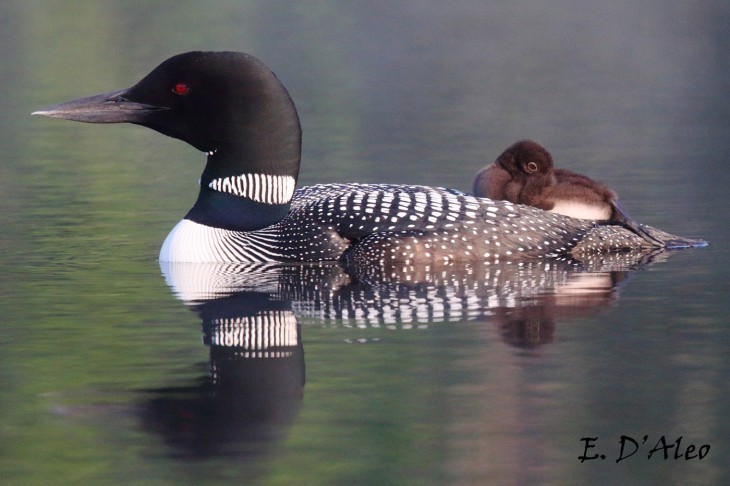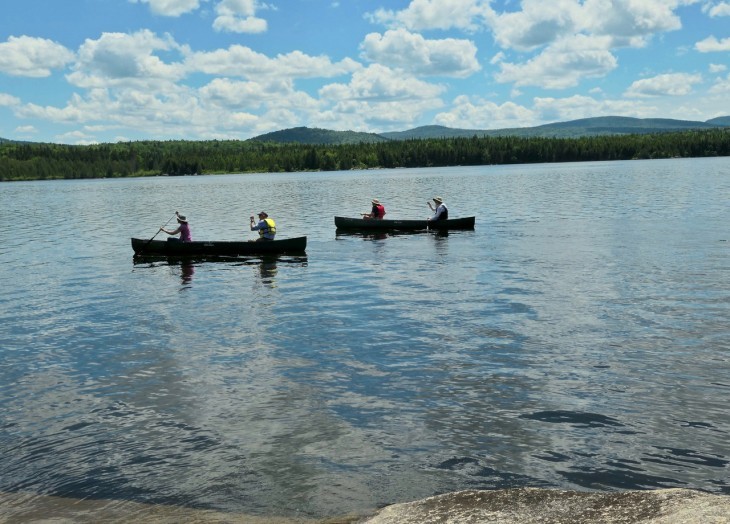
Recently, subscriber Diana Hayes encountered a group from the Vermont Loon Conservation Project at Quimby Camp in Averill, Vermont. Diana was pleased to see biologist Eric Hanson in this outing; she has fond memories of how Eric helped her family and other landowners re-establish loon habitat.
Fifteen years ago, Diana and her husband owned a camp on Lyford Pond in Walden, Vermont. It was a typical waterside camp – a winterized two-room cabin that they’d extended by adding a relocated barn. They named their camp “Loon Rise,” however, at the time, no loons nested in Lyford Pond. “I was terribly disappointed,” Diana recalled. “The longer term owners even more so. Several had come up from Florida each summer for many years to recreate in the cool of the Vermont hills with these much loved birds and refresh the memory of their calling and squalling.”
The owners reached out to the Vermont Fish and Wildlife Department to get some advice on how to entice birds to return. Soon they received a visit from Eric, who advised building loon nesting rafts along wooded parts of the shoreline. They followed his advice, and the very next year, a loon pair appeared and raised two chicks. By 2014, the year that the Hayes family sold their camp, there were two pairs of loons returning year after year.
So how have the birds been faring in the past five years? Reached by phone this week, Eric reported that Lyford Pond remains a successful breeding site for a pair of loons. “We haven’t had to do much in the way of management there,” he said. “I go in every month or so to check, and they have had another successful hatch.” He noted that at some point along the way, the birds transitioned from the raft to a hummock in the marsh – a happy example of human intervention to help re-establish a species, and nature taking over.
“We're actually trying not to use nesting rafts anymore,” said Eric, “because the loon population in Vermont is doing really well. It's great to have ponds like Lyford where the birds nest naturally in a quiet cove.”
If you’d like to learn more about the natural history of this fascinating, ancient bird, check out this article by Tiffany Soukup from our Outside Story archive. For more information about the Vermont Loon Conservation Project, a joint effort of the Vermont Center for Ecostudies and the Vermont Fish and Wildlife Department, check out this site. There are similar efforts in other states in the region, easy to find via an internet search.



Discussion *